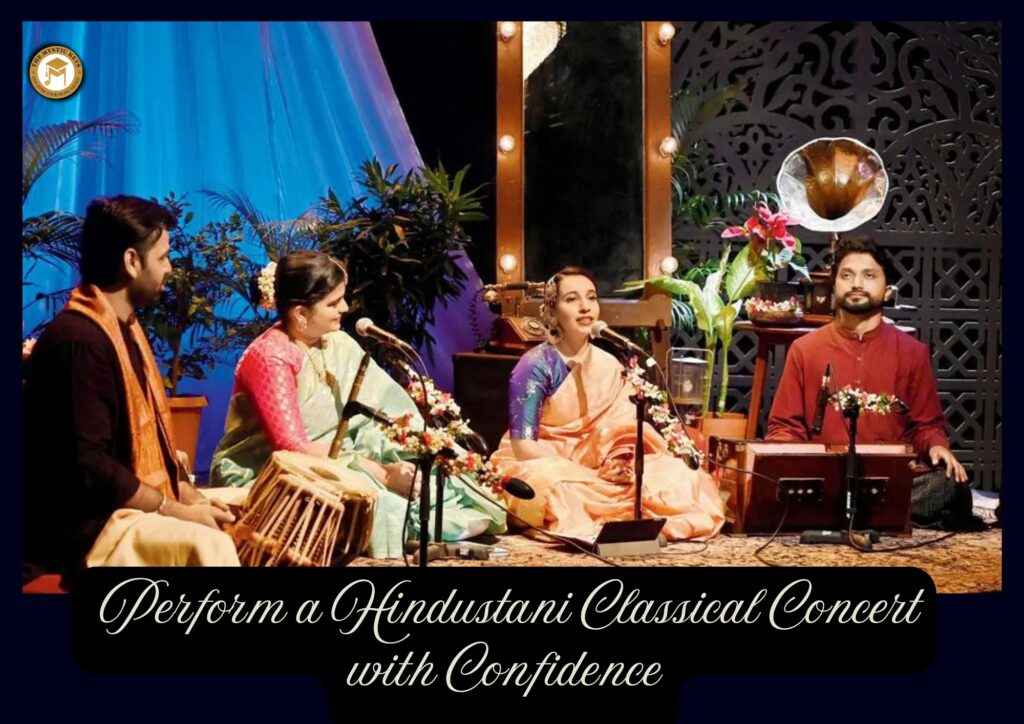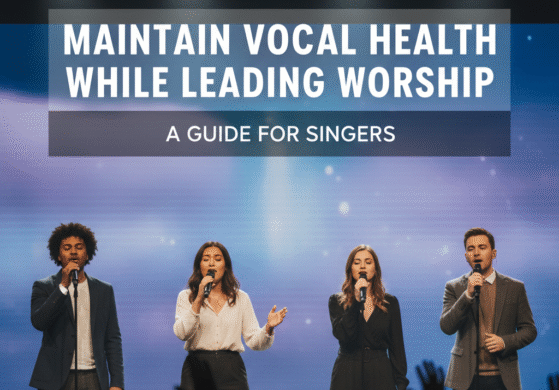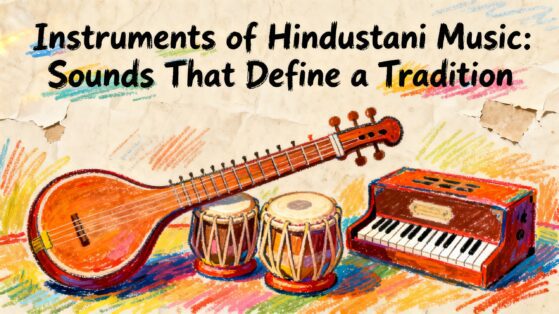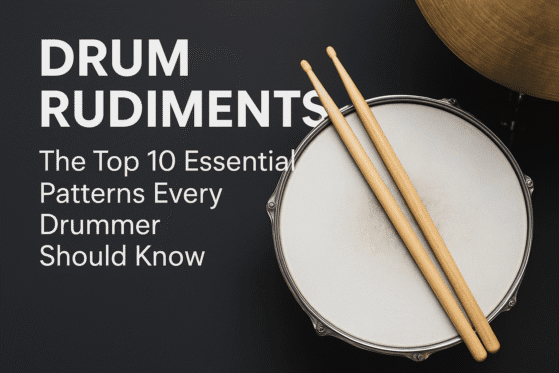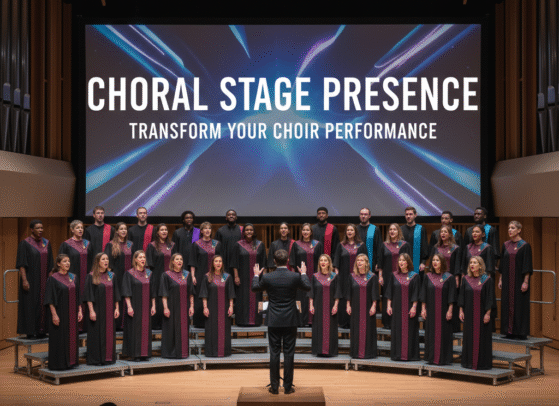How to Perform a Hindustani Classical Concert with Confidence
To perform a Hindustani classical concert is, without a doubt, a remarkable experience—one that gracefully blends centuries of tradition, intricate musical frameworks, and profound emotional depth. Naturally, for many musicians, the very thought of stepping onto a stage to present this art form can stir up a complex mix of excitement and nervousness. However, with the right combination of thoughtful preparation, consistent practice, and a focused mindset, that initial anxiety can gradually transform into quiet confidence. In time, this allows you to perform not only with technical brilliance but also with a genuine emotional connection that deeply resonates with your audience.
Therefore, to help you navigate this transformative musical journey with clarity and assurance, here’s a step-by-step guide on how to perform a Hindustani classical concert with grace, skill, and unwavering poise.

Understanding the Core of Hindustani Classical Music
Before you even begin to prepare for a concert, it’s essential to have a deep understanding of the essence of Hindustani classical music. This includes knowing the key elements that make up a concert:
Raga (Melodic Structure): Ragas are the foundation of Hindustani music. They dictate the emotional tone and mood of the performance. Different ragas are performed at different times of the day, and their ability to evoke specific emotions is integral to a memorable performance.
Tala (Rhythmic Cycles): The rhythm, or tala, forms the backbone of Hindustani classical music. From the subtle complexities of the vilambit (slow tempo) to the intensity of the drut (fast tempo), mastering rhythm is essential.
Alaap, Jor, and Jhala: These are the distinct stages in a raga performance. Alaap is the slow, unmeasured introduction that sets the mood, followed by Jor and Jhala, which progressively build in speed and intensity.
Taans and Bol Tans: In vocal performances, taans are fast-paced melodic runs, while bol tans use the rhythmic syllables of the tabla. Both showcase the musician’s technical prowess and are crucial for enhancing the depth of your performance.
By internalizing these fundamental elements and their connection, you will have a comprehensive understanding of how a concert flows, which directly impacts your confidence on stage.
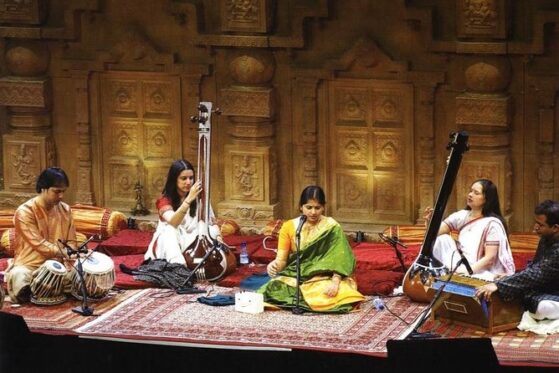
Mental and Physical Preparation
Confidence begins long before the concert starts. Proper mental and physical preparation will help you stay focused, calm, and in control during your performance.
Mindfulness and Meditation: Hindustani classical music requires focus and mental discipline. Engaging in daily mindfulness or meditation practice can help you manage stage fright, calm your nerves, and improve your concentration. The clarity of mind will also help you execute intricate musical phrases without hesitation.
Breathing Exercises: Breathing is crucial in Hindustani music, especially when it comes to sustaining long phrases or maintaining control over your voice or instrument. Practice deep breathing exercises regularly to increase your lung capacity and develop better control over your breath.
Physical Relaxation: Tension in your body can impact your performance. Before a concert, engage in light stretching or yoga to release physical tension and help your muscles remain relaxed during your performance.
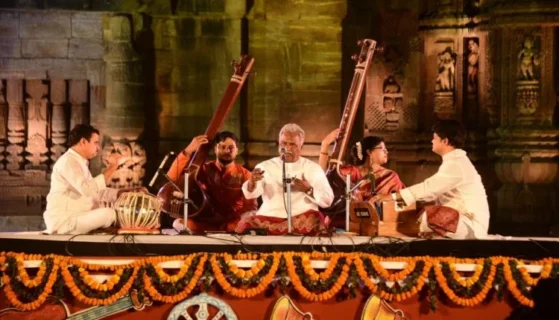
Practice and Rehearsal
“Practice makes perfect” is a mantra that resonates strongly in Hindustani classical music. However, practicing with purpose and consistency is what makes the difference. Here’s how to structure your practice effectively:
Master the Raga: Start by learning the nuances of the raga you will perform. Understand its structure, the emotional undercurrent it carries, and the way it should be developed over time. Break it down into sections — beginning with the alap, moving on to jor, jhala, and taans. This will allow you to internalize the raga’s mood and progression.
Work on Tala and Laya (Rhythm): The rhythmic aspect of Hindustani classical music is equally important. Work with a tabla player or use a metronome to stay in time. Focus on keeping accurate tala cycles, especially during fast passages and complex taans.
Rehearse with Accompanists: A Hindustani classical concert typically involves a collaboration between the main performer and their accompanists — the tabla player, harmonium player, or tanpura. It’s crucial to rehearse with them well in advance. Ensure that everyone is in sync, understands the tempo changes, and communicates seamlessly during the performance.
Mock Performances: Once you feel ready, start doing mock performances in front of friends, family, or fellow musicians. This builds confidence by mimicking the live performance experience. Start small, and gradually increase the audience size as you become more comfortable.
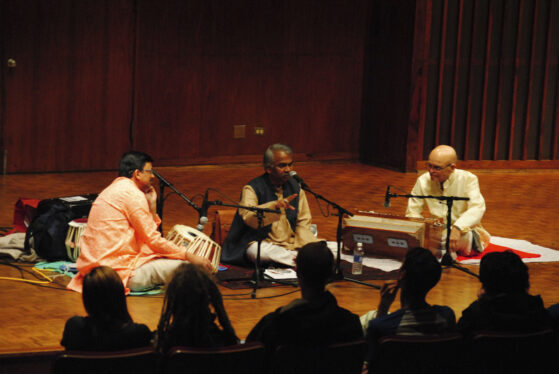
Building Emotional Connection with the Audience
One of the defining aspects of Hindustani classical music is the emotional connection that performers establish with their audience. Music is not just about technical mastery; it is about conveying deep emotions and creating an immersive experience for the listeners.
-
Feel the Raga: A raga is supposed to evoke a particular mood — be it sorrow, joy, longing, or peace. As you perform, try to immerse yourself fully in the emotional essence of the raga. When you connect deeply with the raga, this connection will naturally extend to the audience, who will also feel moved.
-
Control the Pace and Build the Energy: A concert is a journey. As the performer, you must control the flow of energy throughout the performance. Start slow and build intensity as you approach faster taans and complex compositions. This pacing not only showcases your technical skills but also maintains the audience’s engagement throughout the concert.
-
Use Stage Presence: The way you present yourself on stage can influence the audience’s perception of your confidence. Stand tall, make eye contact, and have a commanding presence. Your body language can communicate as much as your music, so don’t shy away from expressing emotion through your posture and gestures.
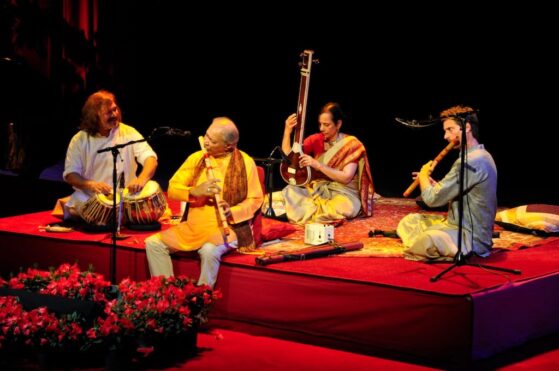
Managing Stage Fright
Stage fright is a common challenge faced by even the most experienced performers. It is crucial to manage your anxiety so that it doesn’t interfere with your performance.
-
Pre-Performance Routines: Develop a pre-performance ritual to calm your nerves. This might include meditation, a quiet moment to reflect on the raga you’re about to perform, or even a brief physical warm-up.
-
Shift Your Focus: Rather than focusing on the audience’s reaction, shift your attention to the music itself. Let the raga guide you and trust in your preparation. Focus on delivering the music with sincerity, and the rest will follow.
-
Accept Imperfection: Hindustani classical music thrives on improvisation, and a perfect performance is rare. Accept that mistakes may happen and view them as opportunities to grow. Confidence comes not from perfection but from handling challenges with grace.
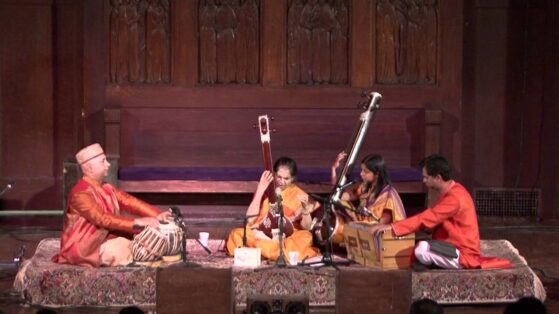
Engage with the Audience
Unlike many Western performances, Hindustani classical concerts encourage a dynamic and interactive engagement between the performer and the audience. To truly connect with your listeners, it’s essential to establish an emotional bond that transcends the stage. Therefore, to help you navigate this musical journey with clarity and confidence, here’s a detailed guide on how to perform a Hindustani classical concert—step by step—with grace, skill, and unwavering poise.
Introduce the Raga: Briefly introduce the raga you will perform. You don’t need to get too technical, but explaining the raga’s mood or significance can help your audience connect with the performance.
Respond to Audience Energy: Pay attention to the audience’s energy and adapt your performance accordingly. If they are captivated by the slow alap, continue to draw out the raga’s emotion. If they respond to your fast-paced taans, take the performance to the next level.
Humility and Gratitude: Express gratitude to your accompanists and the audience. Acknowledge their role in the concert and convey that you are part of a shared musical experience. This will not only foster a positive environment but also help alleviate any lingering nerves.
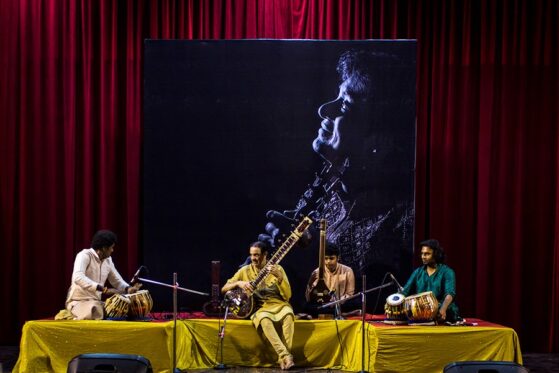
After the Performance | Reflection and Growth
After your concert, take time to reflect on your performance. What went well? Where can you improve? Ask for feedback from trusted mentors, teachers, or fellow musicians.
Self-Critique: Without being overly harsh on yourself, take time to thoughtfully and constructively assess your performance. Begin by reflecting on whether you successfully maintained the emotional mood and essence of the raga throughout. Next, consider your rhythmic precision—were you able to stay aligned with the tala cycles consistently? Furthermore, evaluate your interaction with accompanists—did your coordination and communication enhance the overall musical experience? Each of these elements plays a crucial role in shaping your growth as a performer.
Continuous Learning: Hindustani classical music is a lifelong journey. Every performance is an opportunity to learn. Embrace feedback, and always look for ways to enhance your artistry. Confidence grows over time as you continue to expand your knowledge and experience.
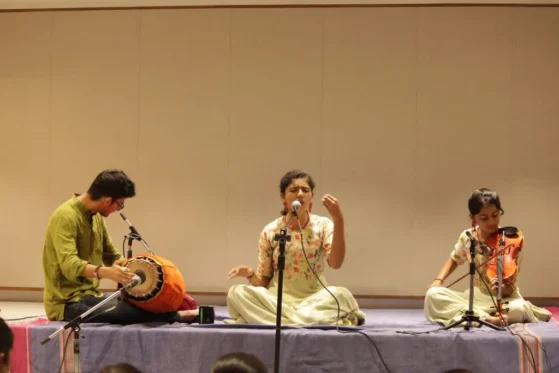
Conclusion
Performing a Hindustani classical concert with confidence is an art that beautifully blends technical mastery, emotional depth, and mental strength. From choosing the right raga to engaging meaningfully with your audience, every step requires thoughtful preparation. With consistent practice, effective stage presence, and a calm, focused mind, you not only deliver a polished performance but also create a truly memorable musical experience. While confidence doesn’t appear overnight, it grows with every note, every improvisation, and every moment you immerse yourself in the music. If you’re ready to refine your skills and perform a Hindustani classical concert with poise, join The Mystic Keys—where tradition meets excellence, and students are guided to shine on stage with true confidence.
Therefore, to help you navigate this musical journey with clarity and confidence, here’s a detailed guide on how to approach and deliver a Hindustani classical music concert—step by step—with grace, skill, and unwavering poise.
Related Blogs
Understanding the Importance of an Effective Hindustani Vocal Practice Structure
An effective Hindustani vocal practice structure is essential for anyone serious about mastering the art of classical singing. Just like any other skill, vocal mastery doesn’t come overnight.
Hindustani Classical Music | Rewards and Struggles in the UAE
The UAE, with its vibrant multicultural community, has become a hub for various artistic expressions, including music. Among these, Hindustani classical music is gaining traction.
Hindustani Classical Music | Bridging Cultures in the UAE
Hindustani classical music, with its deep-rooted traditions and intricate artistry, is not just an expression of Indian culture but a universal language that transcends borders.


